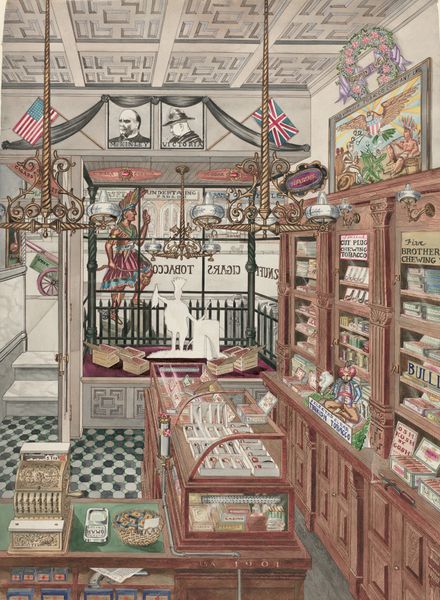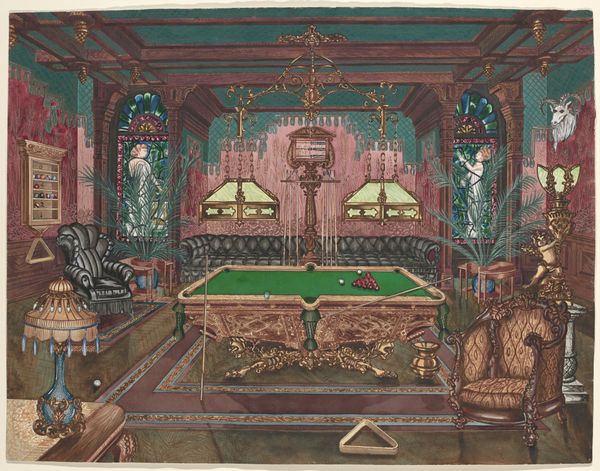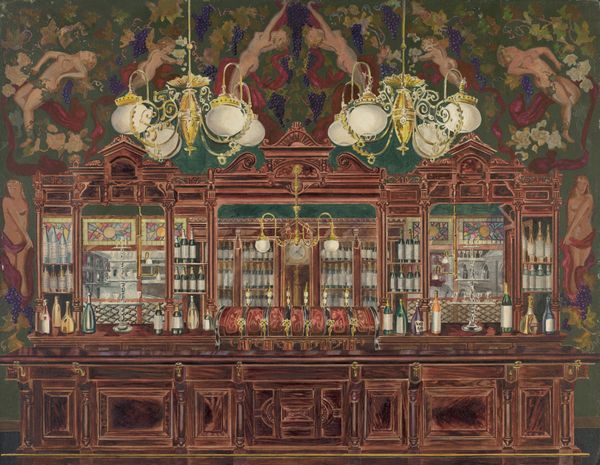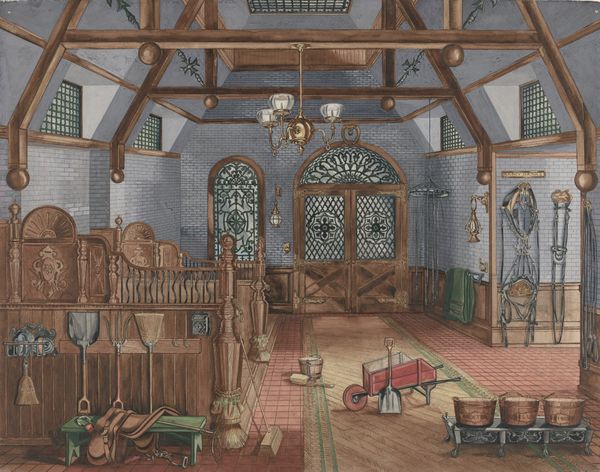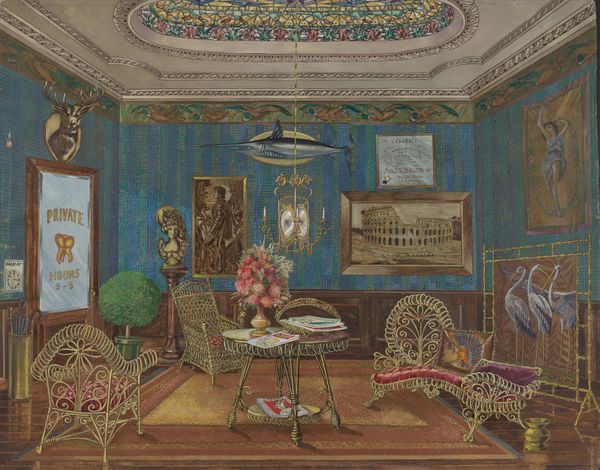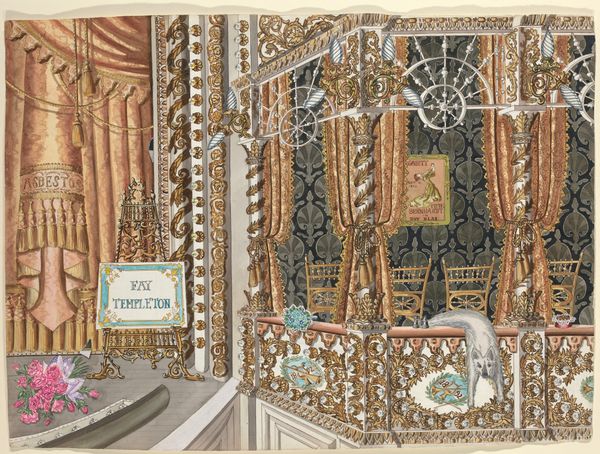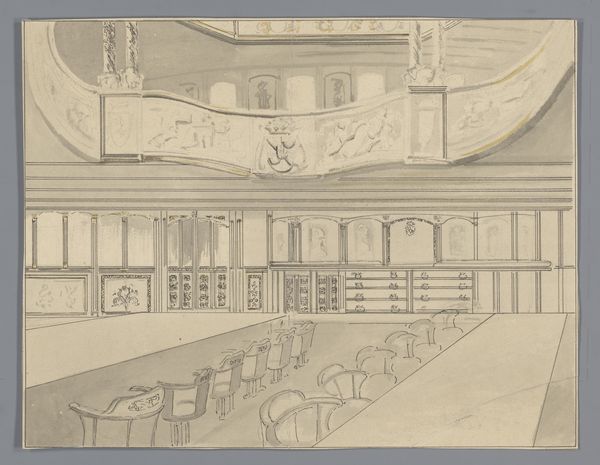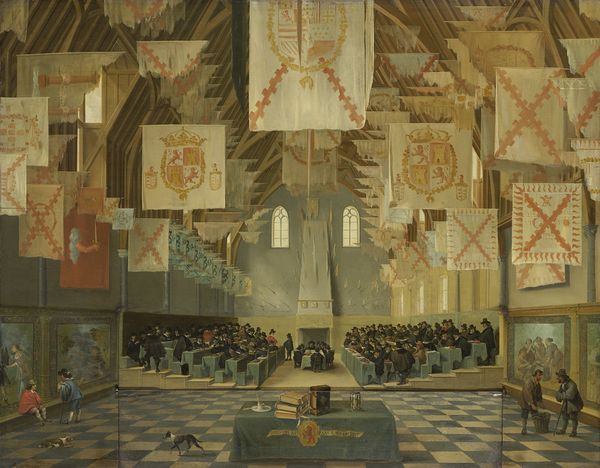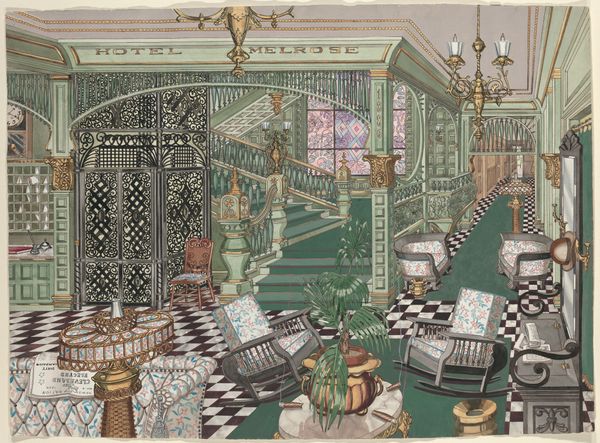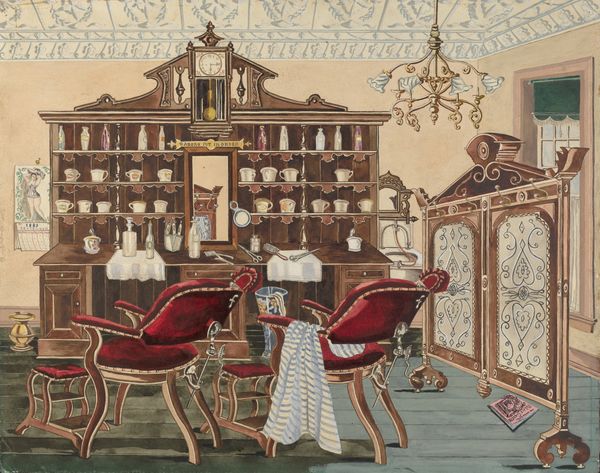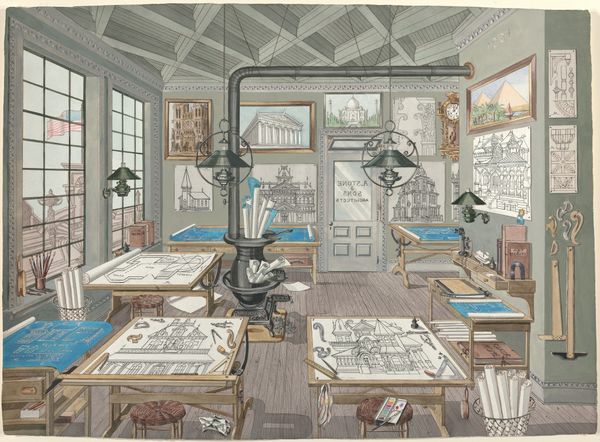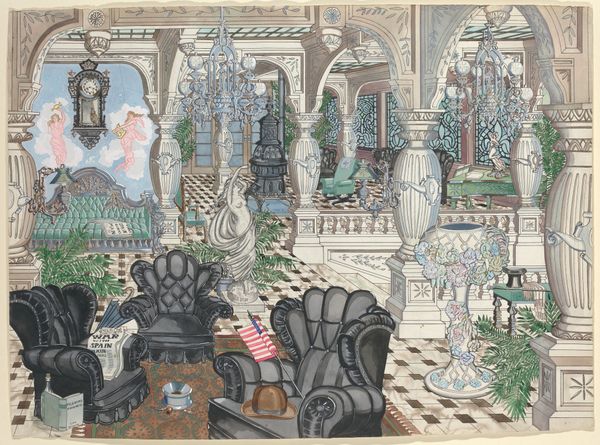
drawing, watercolor, architecture
#
architectural sketch
#
drawing
#
landscape
#
watercolor
#
watercolor
#
architecture
Dimensions: overall: 78.2 x 56.9 cm (30 13/16 x 22 3/8 in.)
Copyright: National Gallery of Art: CC0 1.0
Editor: We’re looking at “Baptist Church, 1901” by Perkins Harnly, a watercolor and drawing made sometime between 1935 and 1942. The drawing depicts the interior of a church and the space feels incredibly intimate and…almost theatrical. I’m particularly struck by how Harnly rendered the details like the lamps and even the hymn board. What catches your eye when you look at this? Curator: I’m drawn to how Harnly captures the atmosphere of a specific time and place through his detailed depiction of this church. The building is obviously designed with the architecture and aesthetics popular in that area. It’s worth investigating what such imagery represents within the wider social fabric of American religious institutions during that era, right? Consider the symbolism embedded within the angel stained glass or even the somewhat… austere simplicity of the interior, then imagine what societal values these choices reflected and reinforced. How does this representation of the church interact with the wider history of religion and social spaces? Editor: So you're saying it's not just a picture of a church interior but rather a statement about faith and community? Curator: Exactly! The picture doesn’t only give access to that interior space; the visual language speaks about the construction of social identities within this place of worship, shaping cultural norms and maintaining the public image of that congregation. Looking deeper, we can ask whose voices are amplified and whose are not in this visualized space. How is the art a representation of, or even a participant in, these socio-political systems? Editor: That is fascinating. I will never look at architectural art the same way again. Thank you. Curator: And I'm reminded that art acts not just as historical document, but also as a point for civic reflection and dialogue.
Comments
No comments
Be the first to comment and join the conversation on the ultimate creative platform.
